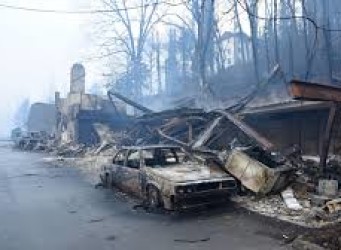|
||||
Keystone XL: Set to Reject
All across America, people are gathering to draw attention to the threat that the Keystone XL pipeline poses to clean air, clean water, public health, and the stability of our climate. Last night alone, thousands attended nearly 300 vigils in 49 states. This outpouring of hope and frustration came together in just a few days, in response to the release of a deeply flawed report by the State Department that underestimates the consequences of building this pipeline across the heart of the United States.
People are hopeful because the decision to reject the Keystone pipeline is in the hands of President Obama, who has stated his firm commitment to fight climate disruption. He will be advised by Secretary of State John Kerry, a long-standing champion in the effort to solve the climate crisis that is already upon us, already stirring extreme weather like Superstorm Sandy, the polar vortex, droughts, and wildfires.
These leaders know that Americans have embraced clean energy and have no interest in retreating to dependence on the dirty fossil fuels of centuries past. So I’m cautiously confident that the president and secretary of state will do the right thing and stop this pipeline in its tracks.
People are frustrated, however, because the report released last Friday was largely written by a contractor that stands to profit if the pipeline is built. Not surprisingly, it gives the pipeline a passing grade, while virtually every credible expert has already given the project a big fat “Fail.” There are plenty of reasons to reject Keystone. Here are a few reasons to reject last week’s report:
The next step in the Keystone XL decision is for Secretary Kerry to make a recommendation to the president about whether the pipeline is in our “national interest.” We welcome Secretary Kerry to the fray. Kerry said in October that “energy policy is the solution to global climate change.” He realizes that climate-driven extreme weather is making life perilous in all 50 states, weakening our economy, and threatening our national security. If we invest in tar sands pipelines, we can expect only poisoned air and water in return. Investing in clean energy, on the other hand, creates jobs, lowers energy costs, builds energy security, and reduces carbon pollution. It’s time to go “all in” on clean energy.
Ultimately, though, this is President Obama’s decision. Although he has struggled with the paradox of reducing carbon pollution while promoting a dirty “all of the above” energy policy, the president already has more than enough evidence to reject this pipeline based solely on its effect on climate disruption. But even though this debate has centered on climate, that is only part of what’s at stake. When considering the “national interest,” the president will also need to consider how this pipeline would affect the health and safety of American families, farmers and ranchers along the pipeline route, and fence-line refinery communities.
Finally, after weighing all the facts, the president must reject Keystone XL and send the world a clear message: Our nation is committed to clean energy and climate solutions.
|

In case you haven’t heard, last week the State Department released it’s new report on the environmental impact of the proposed Keystone XL Pipeline. Below is a response from Mike Brume, Executive Director of the Sierra Club. As you probably know, I am on the Board of Directors for the Club. To me, the most relevant section of the blog is:
“The review assumes that tar sands expansion will happen with or without Keystone XL. But that’s not what industry experts, financial analysts, and Canadian government officials are saying. And if you follow the money, it’s clear that the delay already caused by the campaign opposing Keystone XL has led to both reduced foreign investment in the tar sands and reduced projections of tar sands crude production. In short, this pipeline is the linchpin for tar sands development.”
I say this because I agree 100% with Mike’s observation that expansion will not happen regardless of whether this pipeline gets built or not. And this is not personal speculation. I have had the privilege of hearing directly from industry executives that without the pipeline the capacity to transport the tar sands oils will be pretty much capped at the current rate of about 1.5 to 2.0 million barrels a day. The hope is that with the pipeline this can be expanded up to around 5 to 6 million barrels.
So clearly, building the pipeline is critical to the industry. If it weren’t, why would they be fighting so hard for it??? In addition, even if trains were an alternative to raising output, which it isn’t due to a constraint on tracks, it would raise the cost significantly making the product economically less attractive.
And don’t count on an alternative pipeline to the west, or even the east, coast of Canada. There are significant political forces lined up to oppose this alternative.
And what does the US stand to gain if approved? Not much. A few hundred permanent jobs according to the report and less than 2000 construction jobs. And the oil will most likely be exported.
I just don’t see doubling down on the dirtiest form of oil for the next 40 or 50 years (not to mention the devastation to the boreal forests of Canada) when what we should be investing in is wind and solar and energy efficiency.
The President needs to reject this pipeline and walk the talk on sending a message to the World that he is serious stopping the worst consequences of climate change.
Don’t you agree?


